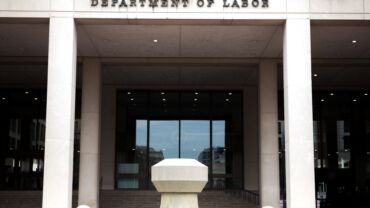Part 2 of this blogpost explains how prevalent payroll is in our daily lives with a focus on key issues in 2022, including unemployment, disaster relief, paid sick leave, and international.
In part 1 of my blogpost on 2022 payroll trends, I was recalling a recent weekend getaway from Hoboken, New Jersey to Miami Beach, Florida and how prevalent payroll is in our day-to-day lives. I talked about worker classification after taking an app-based driver to the airport, COVID-19 vaccines for employers after passing through airport security, and wage and hour issues after arriving in Miami Beach and checking into my hotel.
After checking into my hotel, I went for a walk to get a bite to eat. There are many restaurants in Miami Beach. I looked for a good Cuban restaurant within walking distance. On the way, I saw a few businesses that had closed. This may have been an effect of COVID-19 or for other reasons, but when businesses close, employees are no longer employed and may be able to collect unemployment benefits from the state.
Unemployment and FUTA
At the height of the pandemic, unemployment in the U.S. increased to 14.8%. Currently, that rate is 3.9%. Typically, when an employer needs to terminate an employment relationship with workers, the employer’s unemployment tax rate for the following year may increase. Some states provide relief to employers in this capacity if the terminations were due to COVID-19.
A number of states also had to borrow from the federal government to ensure that their unemployment trust funds were solvent for the payment of benefits to qualified former employees. Currently, there are 12 states and the U.S. Virgin Islands with outstanding federal unemployment loans. If a state does not repay these loans within around two years, the Federal Unemployment Tax Act (FUTA) tax credit for employers in those states is reduced. This results in employers paying more in FUTA taxes. More than 20 states were FUTA credit reduction states during the Great Recession. The U.S. Virgin Islands is currently the only tax jurisdiction that is a FUTA credit reduction state. Near the end of 2022, additional states may be added to that list if their loans remain outstanding.
The U.S. Department of Labor (DOL) announces the list of FUTA credit reduction states each November. The DOL also has a list of potential FUTA credit reduction states for tax year 2022, which includes California, Colorado, Connecticut, Illinois, Massachusetts, Minnesota, New Jersey, New York, Pennsylvania, and the U.S. Virgin Islands. The reduction for all of the listed states, save for the Virgin Islands, would be 0.3%. This comes to an additional $21 in FUTA tax per employee to the $7,000 annual taxable wage base. This might not be a big dent for a smaller employer, but it could add up for businesses with many employees in several of these states.
The IRS updates Schedule A (Form 940), Multi-State Employer and Credit Reduction State, annually. The tax year 2021 version’s instructions note that the U.S. Virgin Islands is the only credit reduction state with a reduction of 3.3% due to having an outstanding loan for several years. The 2022 tax year version may include more states if the loans are not repaid.
The Payroll Guide for Checkpoint Edge has detailed information on unemployment for each state, the District of Columbia, and territories like the U.S. Virgin Islands and Puerto Rico. The guide also contains information on FUTA taxes.
Disaster tax relief
At the restaurant, I sat outside since the weather in Miami Beach in January is typically warm. It is also past hurricane season, so there was little chance of a massive storm interfering with my trip. But disasters do happen. Hurricanes, tornadoes, flooding, and wildfires are just a few unfortunate events that can disrupt business operations. Taxes are still due. Employees still need to get paid. Sometimes the federal and state governments provide tax relief for employers affected by disasters.
The IRS, DOL, and state governments have guidance for employers on how to prepare their business for a disaster and how to take advantage of tax relief during challenging events. The IRS has a dedicated webpage for tax relief in disaster situations. States and localities may also provide tax relief for businesses affected by a disaster. California, which has been affected by numerous wildfires, posts disaster tax relief for payroll taxes on the Employment Development Department’s website.
The daily Payroll Updates news for Checkpoint Edge contains detailed reporting when there is a disaster situation and what tax relief is offered.
Paid sick and medical leave
During lunch, I got a tickle in my nose from a dry breeze and sneezed. I took a home test for COVID-19 before flying, so I was nearly certain this was just a random sneeze and I had not contracted the virus. However, millions of people have tested positive for COVID-19 since the start of the pandemic. As a result, many workers have needed to miss work to attend to their or their family member’s health needs.
Soon after the pandemic began, the federal government sprang into action with legislation that provided paid sick and medical leave for employees due to COVID-19. The IRS has information on this leave on its website. States and localities also carved out paid sick time for those employees who were affected by the virus.
Some states have paid sick and medical leave requirements for employers in addition to the emergency COVID-19 leave. This is trending in more states. In Colorado, new paid sick leave requirements took effect in 2022. In California, Governor Newsom announced a “framework” for an agreement to reactivate the state’s COVID-19 Supplemental Paid Sick Leave law this year until September 30, 2022. Connecticut was the first state to require private sector employers to provide paid sick leave to their employees with a state law that took effect in 2012. New Jersey’s paid sick leave law took effect later in 2018. The District of Columbia also has paid sick leave requirements.
There is no federal law in the U.S. that requires paid sick leave in the private sector, except for an executive order signed by former President Obama that focuses on federal contractors. The currently stalled federal Build Back Better (H.R. 5376) bill has a provision that would provide four weeks of paid family and medical leave for employees. The status of the bill and the paid leave provision for 2022 are unknown at this point.
The Payroll Guide and Payroll Updates for Checkpoint Edge contain detailed reporting, explanation, and analysis on paid sick and medical leave. There are also create-a-charts on this topic.
International
After lunch, I rented a bicycle and rode south along the beach to South Pointe Park. It is an amazing view. I looked out at the ocean to the east. Well past my line of sight, but by no means far, are the Bahamas. And a little more than 300 miles south of Miami is Cuba. After Cuba comes Jamaica. And further south are South American countries like Brazil and Columbia.
Many persons from international countries come to the U.S. with work visas. There are several different types of visas and different processes and fees associated with them. The U.S. Citizenship and Immigration Services (USCIS) has information on these types of work visas.
On January 28, 2022, the USCIS announced that the fiscal year (FY) 2023 H-1B visa cap initial registration period opens on March 1, 2022. H-1B visas allow U.S. employers to hire foreign workers in specialty occupations.
On January 27, 2022, the USCIS announced the availability of additional H-2B visas for the first half of FY 2022. The H-2B visa program allows employers to bring foreign nationals into the U.S. to temporarily fill nonagricultural jobs.
The U.S. also enters into tax treaties with foreign countries for purposes of avoiding double taxation regarding social security programs. In the U.S., there is an employer and employee share for the withholding and payment of Social Security tax. The rate is 6.2% for employers and employees up to the annual taxable wage base. In 2022, this threshold is $147,000.
These agreements are known as “totalization agreements.” The U.S. Social Security Administration (SSA) has a list of these treaties on its website. According to the IRS, the U.S. has totalization agreements with 25 foreign countries. These agreements exempt wages from the Federal Insurance Contributions Act (FICA) taxes including Social Security and Medicare taxes if an individual’s earnings are subject to taxes or contributions for similar purposes under the social security system of a foreign country.
The Payroll Guide for Checkpoint Edge has notable international coverage regarding work visas and totalization agreements.
Payroll is everywhere
After my bicycle ride, I headed back to my hotel room to rest a little. I sat down in a chair on my balcony and took in the view of Miami’s sandy beach and blue-green water. I saw a few cruise ships docked in the water and even a cargo ship further in the distance.
For workers on a cruise ship, individuals pay all applicable federal, state, and local taxes if the ship is a U.S. flagged ship. If an individual is assigned to an international ship, it is the person’s responsibility to report income earned when returning to your respective country. Further, provisions under the IRS’s Internal Revenue Code allow foreign corporations – such as cruise line companies – to do business in the U.S. without being taxed federally, as long as they are registered in countries that have reciprocal agreements in the U.S.
Also, near the end of 2020, a California court ruled that state wage and hour laws apply to crew members on a vessel that provided maintenance services to offshore oil platforms. The court said that California wage and hour laws apply to workers who perform all or most of their work in the state.
I tilted my head back and looked at the bright blue sky. It was so clear that I could see the commercial airplanes coming in for their final approach to Miami International Airport. I’d be back on an airplane in less than 48 hours.
Back on January 10, 2022, the U.S. Supreme Court declined to take up a case about whether California wage law applies to flight attendants working for a commercial airline company who are based in the state but spend most of their time in the air.
Topics around payroll are just about everywhere. Ever hear the story about how U.S. astronaut Jack Swigert was in space around April 15, 1970 for Apollo 13’s moon mission and realized he had not yet filed his income tax return for the prior calendar year? Luckily, he had NASA for assistance.
Payroll really is part of our daily lives in one way or another. It is important for employers, employees, accounting firms, and third-party providers to have all the information and keep up to date with the ever-changing laws, rules, and regulations. The court cases and agency guidance. The form, instruction, and publication changes. The tax payment and filing due dates.
What happens if the due date falls on a holiday? What are the federal holidays? Are state holidays taken into consideration, and what if an employer has locations in multiple states? Maybe there’s an extra day to file in one state for that state’s taxes but not another?
An excellent way to keep apprised of all these changes is investing in a payroll resource library with a powerful search engine, like the Payroll Library for Checkpoint Edge. Get daily news to keep up with the trends and expert analysis and explanation for a deeper dive into more involved topics.
Like most other years, 2022 will be filled with many payroll-related changes.
_______________________________________________________________________________










